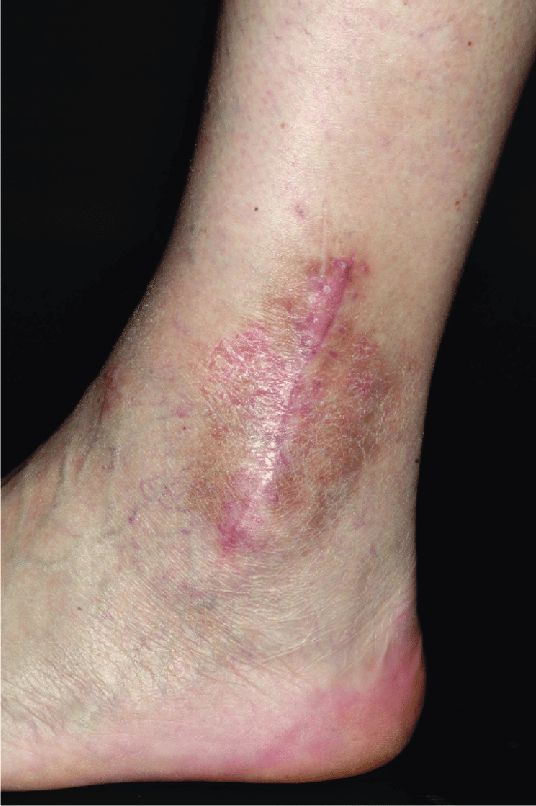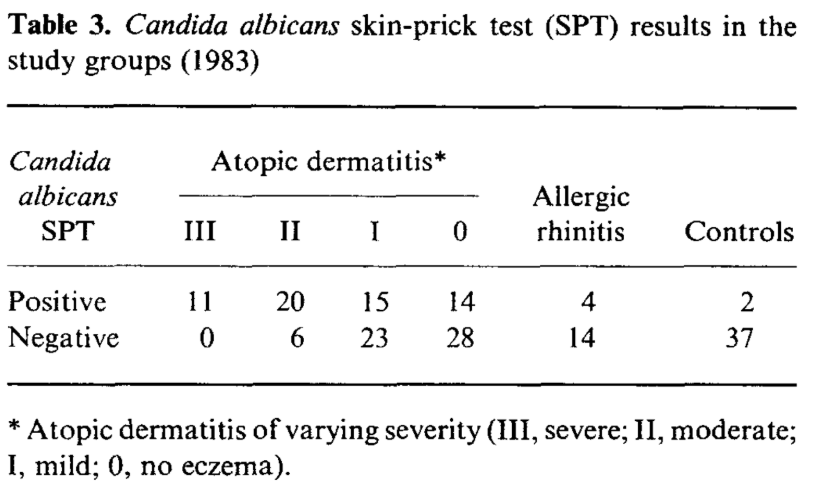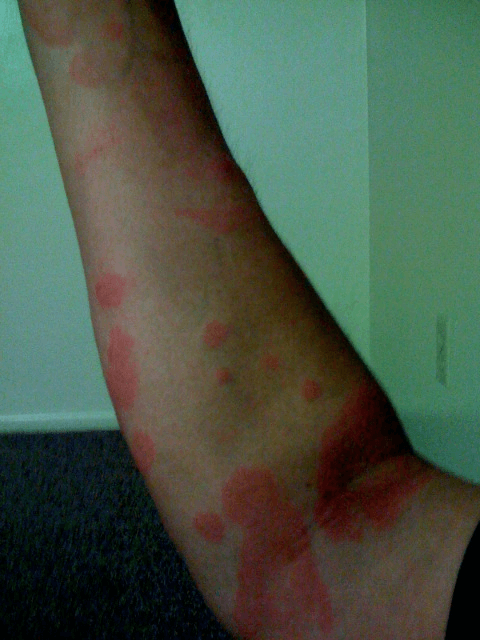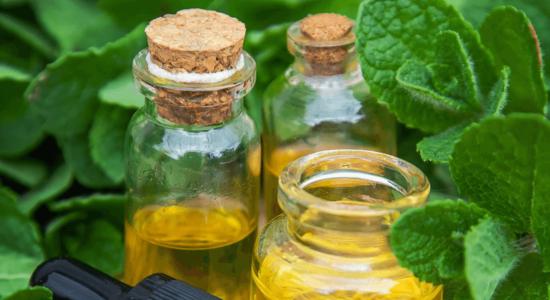See all "Itching" Section Topics

The question "Can a yeast infection make your whole body itch?" is somewhat difficult to answer. The reason for this difficulty is due to the lack of direct material about this condition. Of course, it is a clinical fact that yeast infections can instigate itching localized to the area of infection.
Skin yeast infections can certainly cause itching where they occur on the body. But, can the presence of excessive Candida (Candida is the genus of fungi that causes all yeast infections) cause the general skin of the body to become more itchy?
This is the question this article will focus on; as, it is assumed the reader is concerned primarily with this elusive, possibly real problem.
If yeast infections cause whole body itching, it is somewhat of an undocumented symptom. Yet, it appears that this concern is shared by some people. The late Dr. William Crook made himself instrumental in bringing yeast-related health issues to the knowledge of the general public.
In his writings, he discusses the unusual symptoms that Candida overgrowth in the body can cause. In Dr. Crook’s book, The Yeast Connection, he relates the story of a woman named Matilda. Matilda was treated by Dr. Crook for yeast-related health problems; and, this woman complained of being itchy over her whole body.
The following quote was taken from Dr. Crook’s book, and is Matilda telling her story in her own words:
Although my upper respiratory symptoms are better, my cerebral symptoms are bad and my chemical sensitivity is severe. I itch all over my body. I’m wondering if my dentures and fixed bridges could contribute to my problem, since my gums have been bleeding.
The Yeast Connection [1986] (p.230)
One possible etiology (cause) of whole body itching, if Candida is capable of this, is via the toxins this yeast produces. Candida can create a toxin known as gliotoxin; which may interfere with the normal skin function (we will discuss research possibly indicating this later).
Another chemical Candida can produce is simply alcohol. When Candida produce enough alcohol in a person’s body, they can literally experience symptoms of drunkenness. This is known as auto-brewery syndrome; and, it is a quite real physiological phenomenon. The persistent presence of alcohol in the body may contribute to skin itchiness.
However, it may take some time, and enough fermenting Candida in the body, to result in increased skin itching. We will discuss this more shortly.
Additionally, if you have eczema, this condition may be worsened by Candida overgrowth. If you suffer from frequent yeast infections, and you have eczema, this may be a key reason why your whole body itches. Again, we will discuss research pertaining to this later on in this article.
A 1/2 Day & Yeast is Gone!
Linda Allen suffered from yeast infections for years. Through researching natural medicine & Candida, she found an efficacious solution!
Linda is one expert you want on your side! Let her show you how to get rid of a superficial yeast infection in just 12 hours; AND, keep it gone!
A 60-day, 100% money back guarantee is provided.
Visit Official Site!Candida’s Poisonous Metabolites

According to a study published in the journal Gynecologic and Obstetric Investigation [39.1 (1995): 67-69], Candida albicans (C. albicans) is able to produce an immune system suppressing toxin known as gliotoxin. The researchers analyzed vaginal samples taken from 3 women with severe vaginal yeast infections.
The samples from these three women contained significant levels of gliotoxin. Three other women without vaginal yeast infections, serving as controls, were also evaluated. The women without vaginal yeast infections showed no amount of gliotoxin in their vaginal samples. The researchers speculated that gliotoxin might play a part in the virulence of C. albicans.
Another study, discusses dendritic (tree-like, branching) Langerhans cells and gliotoxin; this study was published in Immunology [71.1 (1990): 46]. According to this study, Langerhans cells are branched, bone marrow derived cells that form a network in the suprabasal epidermis (a layer of the epidermis).
Langerhans cells are responsible for starting an immune response to foreign antigens (a substance that triggers an immune system response) on the skin. According to this study, the application of gliotoxin reduces the density of Langerhans cells and changes their form from highly branched to more rounded. The study also demonstrated that gliotoxin could alter Langerhans cells’ function.
An important question may be, "Could this alteration of Langerhans cells by gliotoxin result in more pathogens on the skin?" If it does, possibly this is a source of whole body itching via Candida overgrowth.
An interesting paper; presented from the United States’ National Center for Biotechnology Information book shelf entitled ‘Auto-brewery Syndrome (Gut Fermentation)’ (StatPearls Publishing LLC [2020]); discusses Candida’s production of alcohol within the body. This production of alcohol by pathogenic yeast in the body is known as auto-brewery syndrome—or gut fermentation.
Some Candida species, such as C. albicans, C. glabrata, C. parapsilosis, and C. kefyr ferment food sources and produce alcohol as a result. This fermentation can especially occur when a high sugar or high carbohydrate diet is undertaken.
People with auto-brewery syndrome have many of the symptoms of alcohol intoxication but have not drank any alcohol. According to this paper, auto-brewery syndrom is more common in people with diabetes, Crohn disease, and those who are obese; yet, it still can happen to otherwise healthy individuals.
The paper reports that a change in the microbiological life in the digestive system is the underlying condition that allows fermenting microbes, such as Candida, to overgrow. These changes to the gut microbiome (the environment of microscopic life) can be caused by a high carbohydrate diet, antibiotic use, and the use of other drugs.
The late Dr. William Crooke also discussed Candida related drunkenness in his writings. For a more detailed exposition of this topic, you can peruse this article on Candida Hub: Yeast Infection Related Drunkenness.
So why would Candida’s alcohol production cause whole body itching? It may be due to the possibility that prolonged exposure to alcohol might cause skin itchiness. According to a study published in Acta Dermatovenerologica Croatica: ADC [12.3 (2004): 181], about 40% of people treated for alcohol dependence complain of excessive itchiness.
The study states that this itchiness likely arises from impaired liver function; yet, it does not have to be related to the liver’s operation. Itchiness in alcoholics can happen before liver cirrhosis.
Therefore, it may be that if you have enough Candida in your body, it can be producing alcohol. If this has been happening for a long enough time—possibly at a level not too noticeable—this might result in more skin itchiness. Although, this is just a hypothesis.
Eliminate Bacterial Vaginosis & Vaginal Odor
Jennifer O’Brien is one prominent expert on BV that knows how to get rid of vaginal odor. BV is a common infection that you don’t have to put up with.
Jennifer will show you how to naturally eliminate vaginal odor in just 3 days.
A 60-day, 100% money back guarantee is provided.
Visit Official Site!Candida albicans May Influence Eczema

The next study we will examine investigated C. albicans role in atopic dermatitis. Atopic dermatitis is more commonly referred to as eczema—which is a condition that makes your skin itchy and red. This research was published in the journal Clinical & Experimental Allergy [23.4 (1993): 332-339].
According to the study’s authors, C. albicans has a controversial role in allergies. The reason for this lack of understanding is due to C. albicans being a common commensal organism. Commensalism occurs when one organism (in this case C. albicans) derives benefits from another organism (in this case a person) without harming it or helping it.
C. albicans is a common commensal colonizer of the human gastrointestinal tract. In addition to being present in the gut, C. albicans colonizes the mouth of 20% to 75% of all people without causing symptoms or an infection (Herwald & Kumamoto; 2014).
Candida fungi are known as "opportunistic pathogens;" i.e., they overgrow and cause infection when presented with an opportunity. Several risk factors are commonly known for Candida infections; e.g., uncontrolled diabetes, taking broad spectrum antibiotics, using high dose estrogen drugs (such as birth control pills or hormone replacement mechanisms), or having an impaired immune system.
The Clinical & Experimental Allergy [23.4 (1993): 332-339] study continues by stating that C. albicans has been speculated to be involved with asthma, urticaria (also known as hives; a condition causing red, itchy welts that result from a skin reaction), and allergic rhinitis (hay fever). Yet, the research focused on the relationship of eczema to C. albicans.
This study involved using a crude cytoplasmic C. albicans antigen to be used for skin-prick testing. Cytoplasm is the liquid inside a cell; and, an antigen is a chemical that brings about a response from the immune system.
Simply stated, the study used the fluid from C. albicans cells that would draw the attention of the study participant’s immune system.
For the research 156 young adults with eczema were given skin-prick tests, yeast cultures were obtained, and immunoblotting (a test for the detection and characterization of proteins) was done. 18 people with hay fever and without eczema; and, 39 people without eczema served as controls.
Patients with widespread eczema commonly had skin reactions to C. albicans extracts. In total, 84% of the participants with moderate or severe eczema developed a skin test reaction. Comparatively, 36% of people with only mild eczema or no eczema developed positive reactions. Of the people with hay fever, 22% developed reactions.
Only 5% of control subjects without eczema developed a positive skin prick test reaction. The following chart was taken from this study, and shows graphically the results of the skin prick test.

The study found eczema was associated with the presence of C. albicans antibodies and C. albicans growth. Those patients exposed to C. albicans showed a significant correlation with C. albicans antibody production and eczema symptoms.
For those individuals without C. albicans growth in the gastrointestinal system, no association was seen with C. albicans antibody production and eczema severity. Severe eczema was rarely observed in people without C. albicans growth. Additionally, severe phases of eczema, in people colonized with C. albicans, were associated with the production of antibodies against C. albicans.
The study stated their findings suggest a role for C. albicans in the worsening of eczema, but there needs to be further clarification. The study concludes by stating there was an observed correlation between C. albicans antibody production and symptoms in people with eczema that were also colonized by C. albicans.
This correlation suggests that the persistent creation of C. albicans antibodies in patients with severe eczema may have clinical significance which should be examined.
Clair Goodall: Author & Nature Lover
Clair Goodall is a bee-obsessed natural medicine convert from Minnesota. She is one expert you might want to know more about!
Clair will help you protect you and your family from toxic products and chemicals and help you discover solutions from nature.
Also, Clair’s book is backed by a 60-day, 100% money back guarantee
Visit Official Site!Hives (Urticaria) & Candida albicans

The possible relationship of Candida to hives was discussed in a study about the management of itching and hives. The study was published in the British Medical Journal [1.5533 (1967): 155]. The study cites research that was done on patients with chronic hives. The cited study utilized 255 patients with chronic hives.
Testing revealed that 49 immediately reacted to C. albicans skin testing solution. Treatment with nystatin (a common antifungal drug used to cure Candidiasis) resulted in a clinical cure in 27 of the 49 patients. An additional 18 other patients, who reacted to C. albicans, were cured of hives only when they stuck to a yeast-free diet for several months.
Many of the patients in the cited research had developed hives after being treated with oral penicillin; they had then been diagnosed as being allergic to penicillin. Yet, these patients did not react to intradermal testing with penicillin or to penicillin given intramuscularly.
In two of these patients, hives could be caused by the ingesting of 5mL of sterile C. albicans skin testing solution. The study states that allergies to C. albicans can cause chronic hives to occur.
A case is reported in the Journal of Orthomolecular Psychiatry [10.4 (1981): 228-238] regarding hives and asthma in relation to Candida. This research paper was written by Dr. C. Orian Truss.
Dr. Truss was often quoted by the late Dr. William Crook in his Yeast Connection book series. Dr. Crook was one of the pioneers of furthering the knowledge of "yeast related" health problems.
Concerning this case, Dr. Truss relates that a young girl developed hives and asthma as a result of a systemic yeast infection. Candida had produced symptoms at its sites of growth in the vagina and bowel.
Dr. Truss states that the hives and asthma represented allergic responses to yeast products entering the bloodstream in the intestines and vagina. Through using an antifungal, the yeast was suppressed and the hives and asthma ceased.
Dr. Truss writes concerning these and other symptoms exhibited by the girl: "The dramatic response of these severe symptoms to nystatin therapy leaves little doubt that this interpretation of these events is correct."
A 12 Hour Cure for Yeast Infections via Natural Medicine

An informative study, published in Obstetrics & Gynecology [120.6 (2012): 1407-1414], relates that yeast infections are a common health malady. According to this study, about 75% of all women will end up with a yeast infection at least once in the course of their lives.
In addition to sporadic infections, recurrent infections can also occur. This study states that recurrent yeast infections affect around 5% to 8% of women during their reproductive years. And, recurrent yeast infections can instigate intense suffering, dysfunction in sexual relations, and be costly.
As any woman with this problem will tell you, this is certainly true.
One woman who had to endure recurrent yeast infections for about 12 whole years was Linda Allen. Linda’s health situation seemed to deteriorate beginning in her late teen years. About this time, she developed a sinus infection.
Eventually, Linda developed a vaginal yeast infection. Linda decided to then make an appointment with a doctor to address her health problems. Linda was given medication and it initially cleared up her yeast infection just fine. However, after some time had passed, Linda developed another yeast infection.
Linda describes her health situation in her own words as follows:
To be honest, it was hard to pinpoint exactly what was wrong: I wasn’t really sick, but I wasn’t really well either. I had listlessness, fatigue, brain fog, stomach ailments, unexplained rashes, skin infections, and so on. It seemed like every day brought a new challenge.
My energy was sapped and I felt exhausted, which affected my grades and put a big dent in my social life.
Linda’s doctor did not know what exactly was wrong with her. She was prescribed increasingly stronger antibiotics to resolve her symptoms. The antibiotic regimen would work for a short time. Yet, the unusual symptoms would eventually return. Both Linda and her doctor did not know the source of her poor health.
Those that knew her wondered if she was in worse health than she was admitting, or that she might be a hypochondriac!
Linda’s life changed one day for the better. This sudden change happened when she visited a naturopathic practitioner. The naturopath was able to correctly diagnose Linda’s health problems—she was suffering from a systemic Candida infection. This overgrowth of yeast in her body was the source of her strange health issues and recurrent yeast infections.
After learning the truth about her health issues, Linda set out to find an answer to her Candida problem. Linda purchased books on Candida, hormonal production, dieting, detox programs, dermatology, and nutrition.
She would spend hours at the library reading through pertinent material. She even interviewed other yeast infection sufferers, and talked with medical professionals who were kind enough to lend her some time.
Eventually, after a lot of effort, Linda compiled a unique, natural medicine based program to get rid of her Candida overgrowth. She would spend about a year’s time refining her new system before she tried it on herself. Eventually, Linda Allen did just that; she began her new anti-Candida system and waited for any results.
It wouldn’t take long before Linda’s recurrent yeast infections stopped completely. Additionally, Linda’s sinus and stomach problems completely disappeared; also, her lethargy went away and her energy was restored.
Eventually, Linda found that she had cured her systemic yeast infection—she was finally Candida free.
For safety, Linda returned to a few doctors and requested that they run some tests on her to verify her good health. And, thankfully, Linda’s test results showed that the indicators of infection were not there. These tests verified that she had finally regained her ‘long lost’ good health.
It did not take long for Linda to start sharing her new treatment program with others. She eventually wrote an extensive book detailing her natural system for getting rid of Candida.
In her book, she also includes a natural program to eliminate yeast infections in 12 hours of time. Using Linda’s techniques, you can also be free of a yeast infection in just half a day. If you suffer from recurrent yeast infections, Linda’s book can drastically turn your life around.
Linda’s book, Yeast Infection no More, is available in a digital format, and can be downloaded instantly. You can start reading it on your computer or mobile device, and start putting into practice Linda’s proven system.
Linda has seen over 100,000 people from around the world get free from their Candida problems since her book has been published.
Linda’s publisher, a large online retailer—a subsidiary of the United States based firm Keynetics Incorporated—provides a convenient, secure way to get her book. Linda’s publisher also guarantees the quality and efficacy of Linda’s book with a 60 day, 100% money back guarantee.
If you decide to try Linda’s book, and you feel it was unsatisfactory, you can quickly get a refund of all your money. And, as it will only take 12 hours to see your yeast infection disappear, 60 days is probably going to be more than enough time to verify the legitimacy of Linda Allen’s program. Linda’s publisher has great support, and they handle all her orders.
You should have no trouble addressing any issues you might have; and, you can be assured of a secure purchasing process.
If you would like to find out more about Linda’s personal journey to recovery, see many testimonials of other people who gave her book a try, or find out more about the book Yeast Infection no More; you can learn more at Linda Allen’s website.
Author: Mr. Nicholas Gross

Nick Gross is a natural medicine enthusiast who has been researching and writing about natural medicine since 2008. Nick is primarily a web developer but also researches and authors written and video content about natural health. Nick has a bachelor’s degree in Management Information Systems from the University of Northern Iowa.
Disclaimer
The information on this website is not a prescription for anyone. This information is for informational or educational purposes only, and is not a substitute for professional medical advice or consultations with healthcare professionals.
Affiliate Disclosure
Some of the links provided on this website are affiliate links. When a purchase is made through these links, Candida Hub earns money from commission. This helps to keep the website up and helpful to people for free. Thank you for any support!
Stay Up to Date
If you enjoyed this article, consider following / liking our Facebook page. This page is primarily utilized to alert followers of new articles that are put on Candida Hub. Candida related news is also discussed. While you are there, you can see what has been more recently added to Candida Hub.
SOURCES:
- Google Books — Dr. William Grant Crook. “The Yeast Connection: A Medical Breakthrough.” Vintage Books, 1986. ISBN: 9780394747002
- https://doi.org/10.1159/000292381 — Shah, D. T., D. D. Glover, and B. Larsen. "In situ mycotoxin production by Candida albicans in women with vaginitis." Gynecologic and Obstetric Investigation [39.1 (1995): 67-69].
- https://www.ncbi.nlm.nih.gov/pmc/articles/PMC1384219/ — McMinn, P. C., G. M. Halliday, and H. K. Muller. "Effects of gliotoxin on Langerhans' cell function: contact hypersensitivity responses and skin graft survival." Immunology [71.1 (1990): 46].
- https://www.ncbi.nlm.nih.gov/books/NBK513346/ — Kelly Painter; Barbara J. Cordell; Kristin L. Sticco. “Auto-brewery Syndrome (Gut Fermentation)” StatPearls Publishing LLC [2020].
- https://pubmed.ncbi.nlm.nih.gov/15369644/ — Kostovi?, K., and J. Lipozenci?. "Skin diseases in alcoholics." Acta Dermatovenerologica Croatica: ADC [12.3 (2004): 181].
- https://doi.org/10.1111/j.1365-2222.1993.tb00331.x — Savolainen, J., et al. "Candida albicans and atopic dermatitis." Clinical & Experimental Allergy [23.4 (1993): 332-339].
- https://doi.org/10.1007/s12281-014-0178-x — Herwald, Sanna E., and Carol A. Kumamoto. "Candida albicans niche specialization: features that distinguish biofilm cells from commensal cells." Current Fungal Infection Reports [8.2 (2014): 179-184].
- https://doi.org/10.1136/bmj.1.5533.155 — Holti, G. "Management of pruritus and urticaria." British Medical Journal [1.5533 (1967): 155].
- http://www.orthomolecular.org/library/jom/1981/pdf/1981-v10n04-p228.pdf — Truss, C. Orian. "The role of Candida albicans in human illness." Journal of Orthomolecular Psychiatry [10.4 (1981): 228-238].
- https://doi.org/10.1097/AOG.0b013e31827307b2 — Marchaim, Dror, et al. "Fluconazole-resistant Candida albicans vulvovaginitis." Obstetrics & Gynecology [120.6 (2012): 1407-1414].
Image Sources:
- https://doi.org/10.5414/ALX01394E — P. Thomas and B. Summer. "Implant allergy."" Allergologie select, Volume 1 (2017) - 1st Issue (59 - 64). Image used under Creative Commons License (CC BY 2.5)







